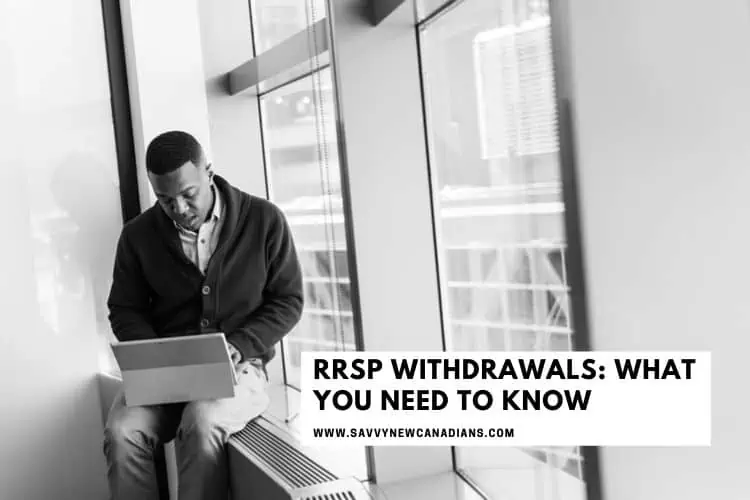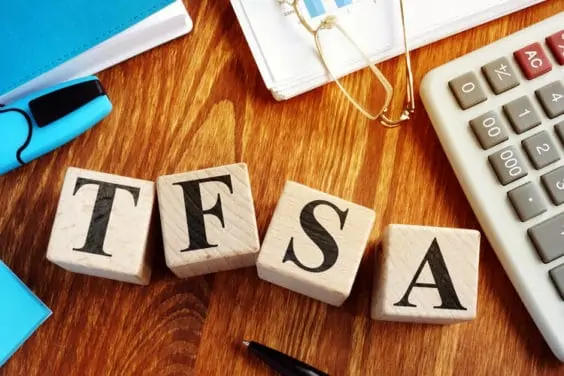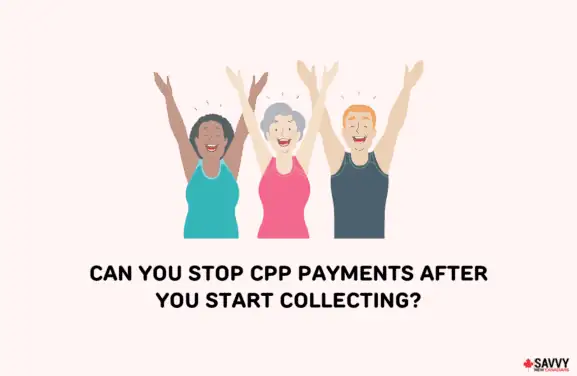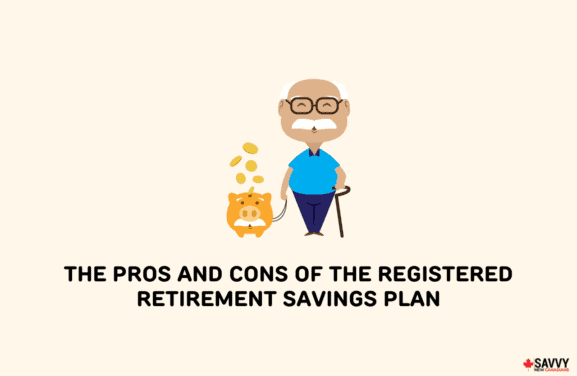The Registered Retirement Savings Plan (RRSP) provides Canadians a practical way to save for retirement.
RRSPs have various rules that govern how they are administered. Generally, you can withdraw from your RRSP account at any time; however, depending on the situation, there are usually tax consequences, and you could also lose your RRSP contribution room.
Below, I cover the withdrawal rules you should know and how to withdraw RRSP funds without paying taxes.
RRSP Withdrawal Rules
While RRSP funds are supposed to be one of your key sources of income in retirement, there are certainly other potential ways to spend the money…at any time.
Whenever you withdraw money from your RRSP account, the amount is added to your income and taxed immediately using specific withholding tax rates.
There are two ways to borrow money from your RRSP tax-free: through the home buyers’ and lifelong learning plans (more on these in a bit).
You can continue contributing to your RRSP until the end of the year when you turn 71. At this time, you must close your RRSP account and either take out the cash as a lump sum and/or transfer your RRSP into a Registered Retirement Income Fund or Annuity.
This means that at age 71, you must start using your RRSP funds as retirement income whether you like to or not.

Withdraw RRSP Without Paying Taxes
1. RRSP Withdrawal Rules for a Home Purchase
The Home Buyers’ Plan allows first-time homebuyers to withdraw up to $35,000 from their RRSP and put the monies towards purchasing or building a qualifying home. A couple can combine resources and withdraw up to $70,000 ($35,000 each).
To participate in this program, you must complete Form T1036 and provide it to the financial institution where your RRSP account is held.
RRSP funds withdrawn under the HBP remain tax-free if you follow the rules for re-contributing them. You must repay the amount withdrawn back to your RRSP within 15 years.
CRA provides an annual Home Buyers’ Plan statement of account that tells you the status of your repayments.
2. RRSP Withdrawals To Fund Your Education
If you own an RRSP account and are eligible, you can withdraw up to $10,000 per calendar year and up to $20,000 in total to finance your full-time education or training.
This program is known as the Lifelong Learning Plan (LLP), and you must complete Form RC96 and provide it to your RRSP issuer to utilize the LLP.
You have 10 years to pay back the amount you withdrew, meaning you must repay at least 1/10th of the total amount you withdraw each year.
CRA sends you an LLP statement of account that shows how much you withdraw, your current balance and your next minimum repayment.
Read more about the LLP eligibility details.
RRSP Withdrawals and Withholding Tax
The benefits of the Home Buyers’ Plan and Lifelong learning Plans are that: 1) They allow you to borrow money tax-free from your RRSP account, and 2) You can re-contribute the amount you withdrew and continue to enjoy tax-sheltered growth on your retirement account.
When you withdraw funds from your RRSP outside of the HBP or LLP, your bank withholds tax and remits it to the government on your behalf. You also lose the contribution room permanently, which means you cannot re-contribute the amount you withdrew.
This tax withheld by your bank varies depending on the amount you withdraw and your province of residence.
RRSP withholding tax rates in Canada are:
- Withdrawals up to $5,000: 10% withholding tax (5% in Quebec)
- Withdrawals from $5,001 to $15,000: 20% withholding tax (10% in Quebec)
- Withdrawals exceeding $15,001: 30% withholding tax (15% in Quebec)
Quebec residents also have an additional 16% provincial sales tax withheld at source in addition to the federal tax rates shown above.
For non-residents of Canada, the flat withholding tax rate on any withdrawal is 25%. This rate may be less if your country of residence has a tax treaty with Canada. The taxes withheld by your bank may not account for all your tax obligations.
RRSP withdrawals are included in your total taxable income, and depending on your marginal tax rate, you may still owe taxes when you file your income tax return.
See the different tax brackets with combined federal and provincial tax rates here.

Spousal RRSP Withdrawal Rules
Couples can manage their retirement income and taxes through the use of a spousal RRSP.
If you earn significantly more than your spouse (i.e. you are in a higher tax bracket), you can choose to contribute to a spousal RRSP.
The higher-income spouse claims the tax deduction at their higher marginal tax rate, while the lower-income spouse pays taxes at their lower tax rate when they withdraw from the account. The family can lower their overall tax burden in retirement.
A few things to note when it comes to spousal RRSPs:
- You can only contribute to a spousal RRSP if you have contribution room.
- If the annuitant withdraws money from the RRSP account within three years of its contribution, the contributor (i.e. higher-income spouse) has to add the amount to their own taxable income and pay the taxes. This is referred to as the Spousal RRSP Attribution Rule.
- You can continue to contribute to a spousal RRSP even after you turn 71 if you have an RRSP contribution room and your spouse is under 71 years of age.
Should I Pay Off Debt Using My RRSP?
It is generally not advisable. Here are the reasons:
1. You are raiding your retirement pot for the future. RRSP withdrawals outside of the HBP and LLP will result in a loss of contribution room. For example, if you take out $20,000 to pay off debt, that $20,000 contribution room is lost forever.
2. Taxes are withheld at the source. If you withdraw $20,000, a 30% withholding tax is levied, which means you actually receive $14,000. And you may still owe the CRA when you file your taxes in April because the amount you withdrew is added to your taxable income.
If you are trying to pay off a $20,000 debt using your RRSP, you will have to withdraw $28,571.
3. You lose out on compound tax-free growth. The funds you withdraw will result in fewer dollars working on your behalf. Compound interest and time are your best allies when it comes to investing for your future.
Every day that passes by with fewer dollars in your account and lost contribution room can be detrimental to your retirement plans.
As an example, a $20,000 RRSP balance earning 7% per year could easily grow to become $108,000+ in 25 years, even without making any further investments.
Depleting your RRSP should not be your first option for paying off debt. See if you can re-organize your finances and cut your expenses. Direct any extra cash towards paying off high-interest debt.
Find out if you can consolidate your debts at a lower interest rate. A balance transfer credit card may be handy when carrying credit card debt.
Find ways to earn extra cash. For example, find new or part-time work to increase your income, declutter and sell things you don’t need, or monetize your existing assets, e.g. rent your car or unused room.
If you run out of options and have a TFSA, you can withdraw funds from there to pay off debt. The upside to using a TFSA to pay off debt is that you can re-contribute any amounts withdrawn in future years.
A scenario where withdrawing RRSP funds to pay off debt is less detrimental is when your taxable income is low. This could mean low to no taxes payable on the amount you withdraw.
Your bank will still withhold taxes; however, you can recover them at tax time. Note that this doesn’t change the fact that you lose that contribution room forever.
Conclusion
Your RRSP account belongs to you; you can take money out anytime.
While funds remain in the account, they are tax-free. When you withdraw, there are tax consequences depending on your overall taxable income. You also lose the RRSP contribution room.
Withdrawals relating to the Home Buyers’ Plan and Lifelong Learning Plan must be re-contributed within specific timeframes if you want to continue enjoying the tax-free benefits and growth that RRSPs offer.
Related: RRSP contribution limit for 2024.




Good evening. I have never received a GST in years. I have been single for four years and I have my CPP and OAS. I was wondering do I qualify for the GST cheques. People keep telling me that I qualify. Could you please let me knowing I’m not receiving it.
Great article Thankyou. Could you provide more detail on rules from a spousal RRSP or an actual spouses RRSP when you retire but are not 65. My understanding is that you cannot income split until 65 so what is the best way to withdraw prior to 65 to stay in a lower tax bracket?
@Rob: Assuming that I understand your question, RRSP income/withdrawals are not considered as eligible pension income for income-splitting purposes. If you have lower income years prior to retirement (65), you would potentially draw on RRSP funds even if you don’t need it then and re-invest it inside your TFSA (assuming you have contribution room).
By their very nature, spousal RRSPs can help you split income by moving money from a higher-earning spouse to a spouse in a lower tax bracket. If this is the case, you could still be saving on taxes even if the lower-earning spouse makes withdrawals prior to age 65.